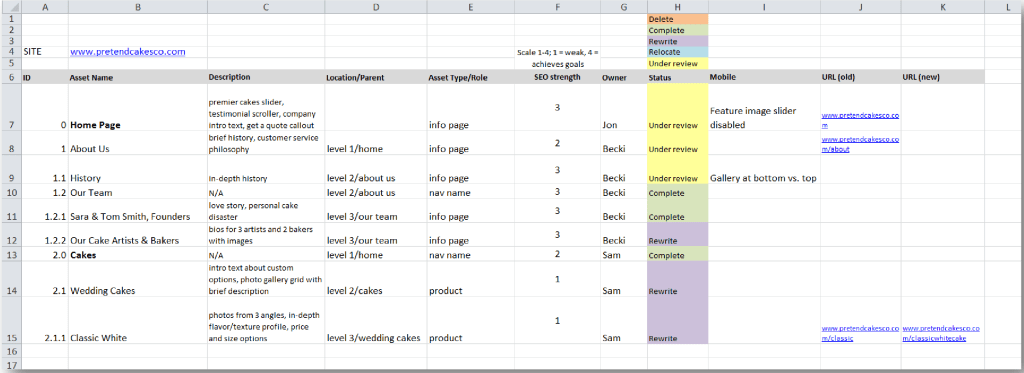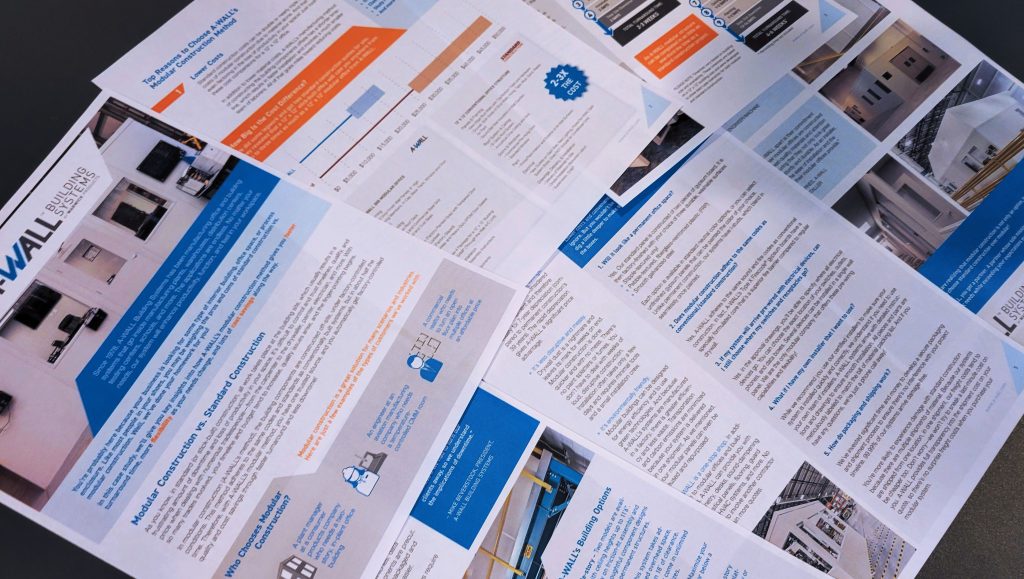by Lexie Thomas, WP owner
Do you really know what is on your website? “Of course!” is most people’s instinctive response. But if your website has been growing over several years without any sort of content strategy or plan, you may know less than you think.
A content audit is a great tool for websites larger than 15 to 20 pages. The end product—likely a detailed spreadsheet—is a status report and roadmap for managing and improving the most important aspect of your website: it’s content. After all, it’s your content that tells your story and connects with your customers. It also provides information for search engines to index and, hopefully, present to online searchers. In short, keeping your content fresh and relevant is crucial to achieving the business goals you’ve set for your website.
It’s much easier to go about improving your content when you know it inside and out. Your goal with a content audit is to capture each asset on your website: pages, posts, PDFs, white pages, photos, videos, charts, forms, and more.
The format that works best for this exercise is a good, old-fashioned spreadsheet. Not necessarily the most glamorous tool in a creative environment, but so handy! And the fact is, writers and content creators are much less likely to create successful pieces without a plan and data to build from. An audit laid out in a spreadsheet sets the stage for easy planning and a cohesive content development approach.
A content audit spreadsheet should contain these types of columns, although this list is by no means exhaustive.
- Asset identification. Is this a top-level landing page, like Services or About Us? Is it a product manual? Or something else? Likely labels here include testimony, product page, legal page, etc.
- Description. Summarize the content on the page.
- Location in the navigation structure or relationship to other assets. How deep in the structure does this asset live? Make sure you identify any parent page and child pages.
- Asset role/type. Video, blog post, PDF, image, etc. Define a limited list and stick to it.
- Analytics/SEO. How popular is the asset? Is it ranking for keywords and organic searches? Decide what factors to consider here in an initial goals meeting.
- Owner. Who is in charge of maintaining and updating this asset?
- Status. What is your plan for this asset? Does it need to be re-written or relocated? In this field, color coding can be helpful.
- Mobile. Note the differences if the mobile content for an asset differs from the desktop content.
- URL. If you are doing a redesign, recording the old URL and the new URL is a best practice. That way, you have a resource for redirecting links and fixing broken ones.
In addition to these potential columns, some content experts recommend assigning each page a tracking number—i.e., 1.0, 1.1, 1.1.1—because it makes it simple to reference each asset. In the end, the spreadsheet should be adapted to capture the data you need to achieve the goals of your website project.

A content audit spreadsheet sets the stage for easy website planning and a cohesive content development approach.
It can be painstaking to conduct an audit, especially if the site is large. There are tools that can crawl your website and capture the pages for you. These tools are a helpful starting point, but without a human assessing each asset, they are providing an inventory, not a quality assessment. An inventory is much less helpful if you’re looking to really improve your site’s content.
Here’s an example: Imagine your company is undertaking a complete website redesign. As a growing manufacturer, you have been focused on adding products to your website. When you conduct the audit, you find about 300 product pages in the system. That’s a lot to migrate to a new site and a lot to keep updated!
Here’s the good news: After cataloging those product pages, you are able to move forward with a plan to group similar models and eliminate obsolete models. The new website launches with about 100 product pages. With updated product descriptions and organized information presentation, the website delivers more on-target content with nearly 66 percent fewer pages!
Even if you are not planning a complete redesign, an audit can be done incrementally, and content updated in phases. This less-intensive approach is more doable for smaller organizations and will still deliver a website that is adapting to the information its users are looking for.
Content auditing takes dedication and an understanding of the broader impact the process has on the content strategy of the business. In the case of a website redesign, content auditing also requires a grasp of how the audit will inform subsequent development phases, like programming and design.
Reach out to the Write Place if you’re ready to invest in this key website management tool but are not sure you have the internal resources to move forward. Believe it or not, we love this kind of thing!



